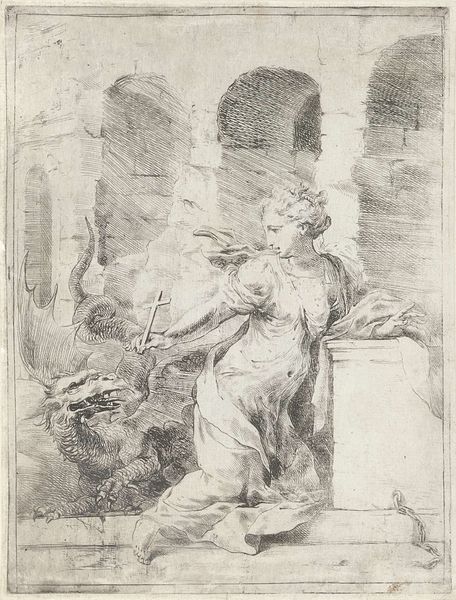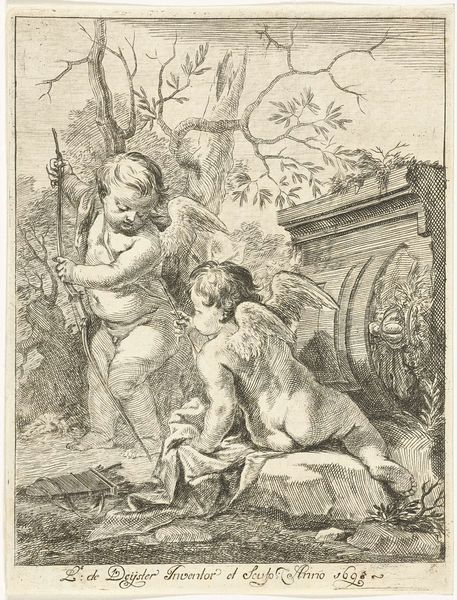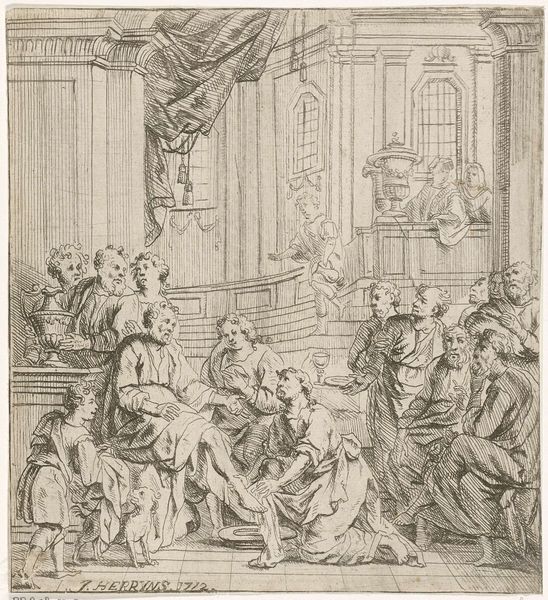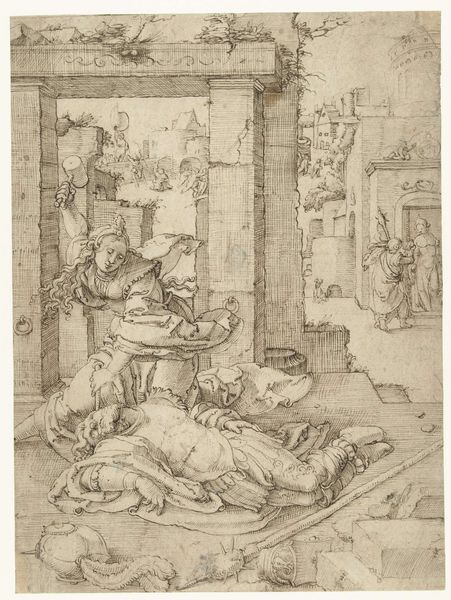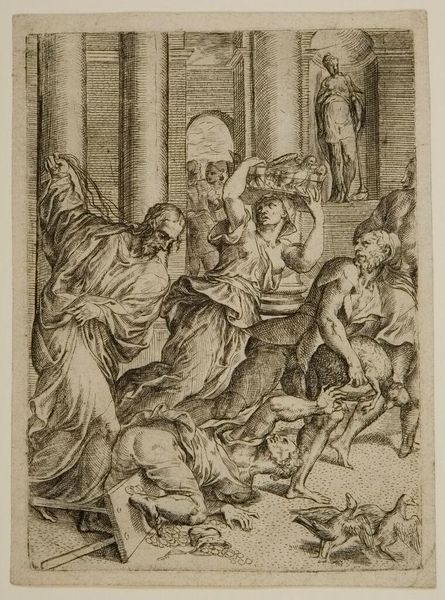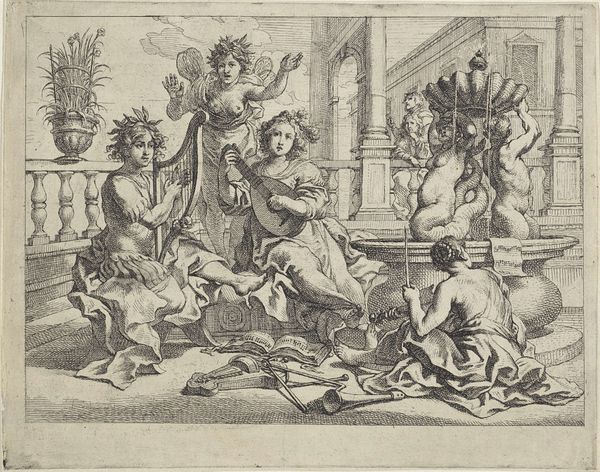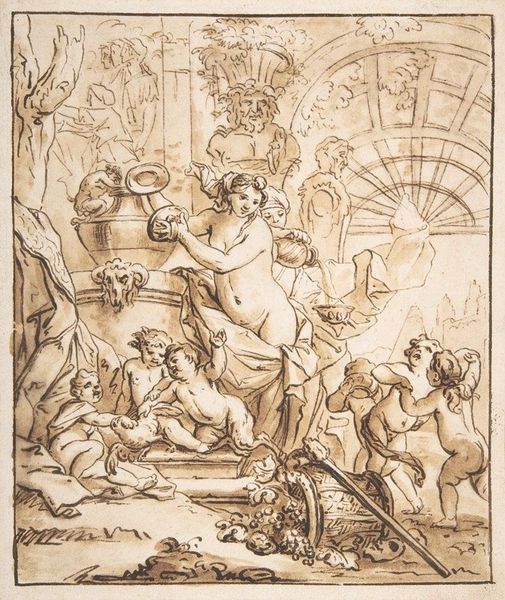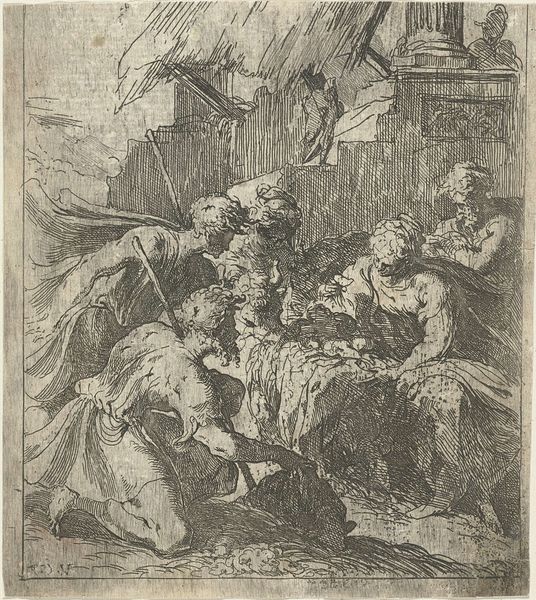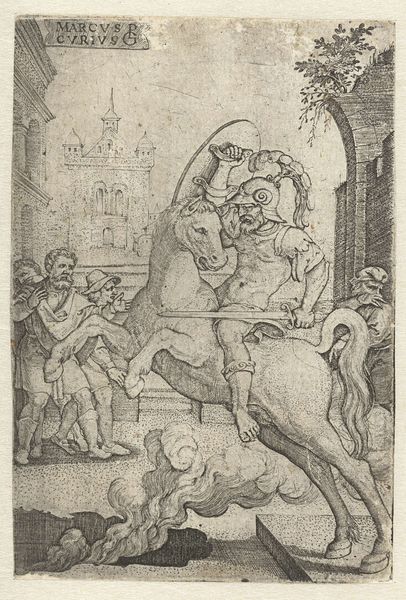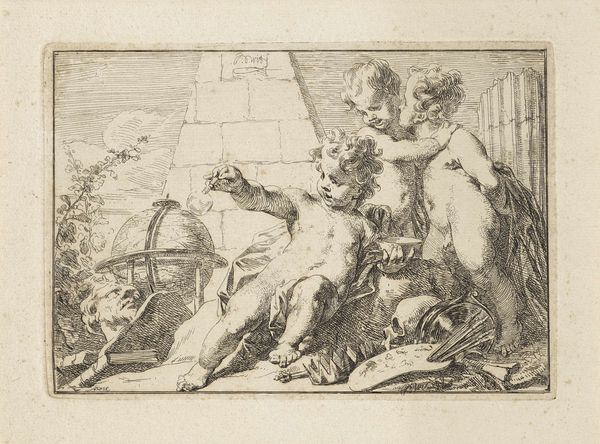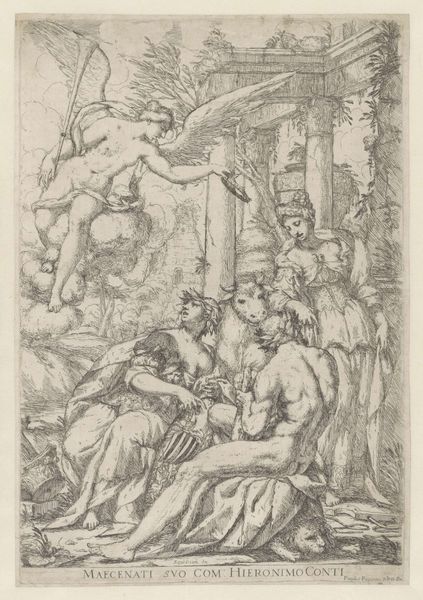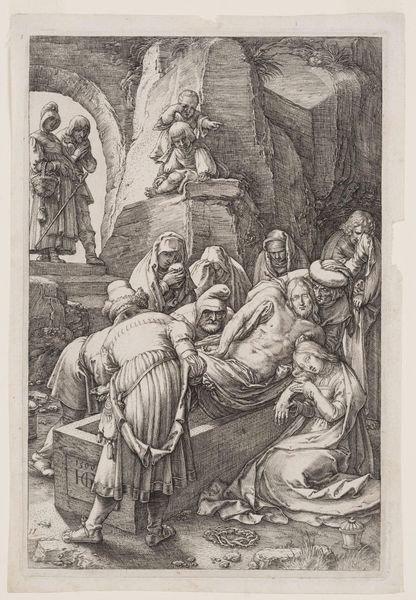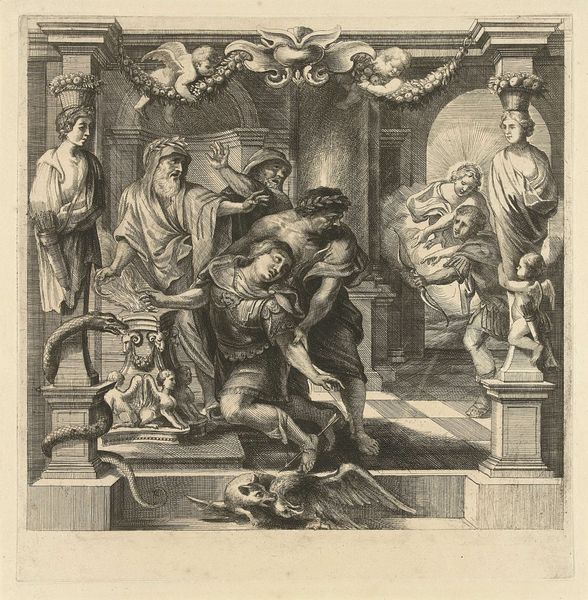
drawing, print, engraving
#
landscape illustration sketch
#
drawing
#
baroque
#
mechanical pen drawing
# print
#
pen sketch
#
pencil sketch
#
landscape
#
figuration
#
personal sketchbook
#
sketchwork
#
pen-ink sketch
#
pen work
#
sketchbook drawing
#
genre-painting
#
engraving
#
initial sketch
Dimensions: height 159 mm, width 125 mm
Copyright: Rijks Museum: Open Domain
Editor: This is "Two Boys by a Statue of Venus," by Louis de Deyster, made sometime between 1666 and 1711. It appears to be an engraving, and what strikes me most is the level of detail achieved with what I assume was a fairly rudimentary process. What stands out to you in terms of the means of production and its effect on the meaning of the image? Curator: The printmaking process is key here. Think about the labor involved: the repetitive, meticulous carving required to produce this image. The burin becomes a tool to reproduce and disseminate imagery, shifting art away from unique handcrafted objects toward something more widely available. How does this challenge traditional ideas about artistic value, especially the divide between “high art” and craft? Editor: I hadn’t considered the reproducibility aspect so directly. It definitely democratizes the image, making it accessible beyond a wealthy patron. Does the medium itself influence the subject matter, or vice versa? Curator: Absolutely, think about the social context of the time. Printmaking fueled the growth of a visual culture accessible to a rising middle class. The genre scene depicted here – boys admiring a Venus statue – isn't simply a window onto daily life; it reflects a new market for art that speaks to everyday experiences. What do you think these images being spread around might indicate? Editor: So, the process is not just a technical aspect but also a social one, connecting artistic production to broader economic and cultural shifts. Perhaps a move towards accessibility or simply marketability. That’s a great perspective shift for me. Curator: Precisely. By focusing on the materials, labor, and social context of its making, we see how art objects like this one are deeply intertwined with the economic and cultural forces of their time, and begin to lose any idea of preciousness that may be attached to an ‘artwork’.
Comments
No comments
Be the first to comment and join the conversation on the ultimate creative platform.
